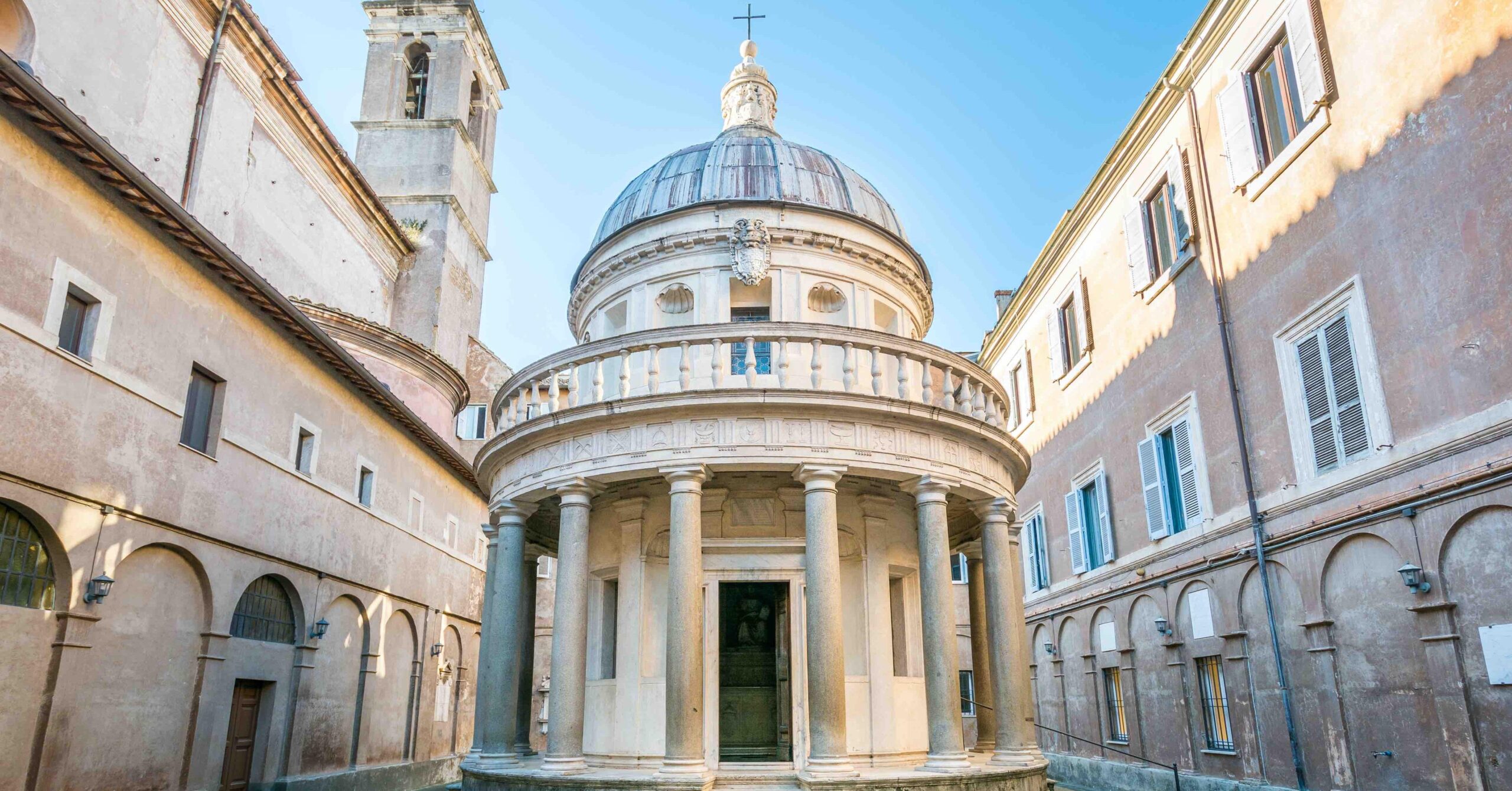Are you curious to know what is the tempietto seen below? You have come to the right place as I am going to tell you everything about the tempietto seen below in a very simple explanation. Without further discussion let’s begin to know what is the tempietto seen below?
What Is The Tempietto Seen Below?
Amidst the rich tapestry of historical and architectural marvels that adorn the city of Rome, one structure stands as a testament to the enduring beauty of classical design: the Tempietto. Perched atop the Janiculum Hill, this exquisite edifice is a masterful creation of Renaissance architecture, and its significance extends beyond its stunning aesthetics. In this blog post, we’ll explore the Tempietto, its history, architectural features, and its enduring legacy in the heart of Rome.
Unveiling The Tempietto
The Tempietto, Italian for “small temple,” is a diminutive yet profoundly influential structure located within the courtyard of the Church of San Pietro in Montorio in Rome. It was commissioned by the Spanish King Ferdinand II of Aragon and Queen Isabella of Castile to commemorate the site where, according to tradition, Saint Peter was crucified. Designed by the illustrious Renaissance architect Donato Bramante, the Tempietto was completed in 1502 and remains one of the most celebrated architectural treasures of the Italian Renaissance.
Architectural Features
- Classical Proportions:
The Tempietto is a quintessential example of classical architectural proportions. It is a circular temple with a diameter of about 15 feet (4.5 meters) and a height of 27 feet (8 meters). Its harmonious design adheres to the principles of classical antiquity.
- Doric Columns:
The outer colonnade of the Tempietto consists of 16 slender Doric columns made of travertine, a type of limestone commonly used in Roman architecture. These columns support an entablature adorned with triglyphs and metopes, echoing the architectural elements of ancient Greek temples.
- Dome:
The Tempietto’s crowning glory is its dome, a masterpiece of Renaissance architecture. The dome’s elegant proportions and use of classical motifs make it an architectural marvel. It is crowned with a cross, symbolizing the Christian significance of the site.
- Central Courtyard:
The Tempietto stands at the center of a serene courtyard, surrounded by a simple portico. The courtyard provides a peaceful space for contemplation and reflection, in line with its sacred purpose.
Enduring Legacy
The Tempietto is revered not only for its architectural beauty but also for its symbolic significance. It represents the Renaissance’s revival of classical aesthetics and ideals, blending the spiritual and the artistic. Over the centuries, it has inspired countless architects and artists, leaving an indelible mark on the world of architecture.
Visitors to Rome continue to marvel at the Tempietto’s graceful proportions, harmonious design, and serene setting. It serves as a reminder of the enduring legacy of classical architecture and the profound influence of the Renaissance era on the world of art and design.
Conclusion
The Tempietto, with its classical elegance and spiritual significance, is a true gem nestled within the heart of Rome. It stands as a testament to the enduring power of architectural beauty and the timeless influence of the Renaissance. Whether you are an architecture enthusiast or simply a lover of art and history, a visit to the Tempietto is sure to be a memorable and enriching experience, allowing you to connect with the spirit of Renaissance Italy beneath the Roman sky.
Visit Ofstype to Get to know about more concepts like this.
FAQ
What Is The Significance Of The Tempietto?
The “Tempietto” or little temple is a martyia (a building that commemorates a martyrdom) that marks the traditional site of Saint Peter’s crucifixion. It is perhaps the most perfect expression of Renaissance Italy’s conception of classical harmony and order.
What Are The Characteristics Of The Tempietto?
Peter’s Basilica in the Vatican. The rounded structure of the column supports a classical Greek entablature, the element that supports the roof and dome, which was adorned with engravings typical of the classical style buildings, including urns, ribbons, and 2-D columns.
What Architectural Style Is The Tempietto?
Bramante added a dome (since altered) and chose the Doric order for the structure’s decoration. Remarkable for its elegantly simple reinterpretation of classical forms, the Tempietto is regarded as one of the finest examples of High Renaissance architecture.
Why Is Tempietto Known As A Perfect Renaissance Building?
In being centrally planned and not having projecting features that designate a front facing, the Tempietto is one of the most perfect embodiments of centralized design built in the Renaissance.
I Have Covered All The Following Queries And Topics In The Above Article
What Is The Tempietto Seen Below
What Is The Tempietto, Seen Below
What Is The Tempietto Seen Below Quizlet
What Is The Tempietto Seen Below
What is one major contributing feature to the Tempietto below
